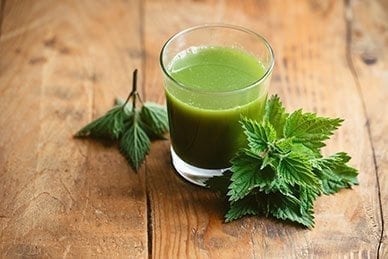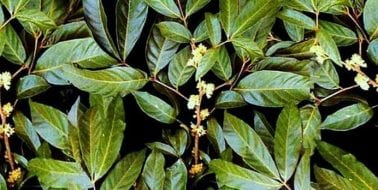Ingredient Spotlight: Stinging Nettle Supports Men's Sexual Health & Libido
Stinging nettle, or Urtica dioica, is a plant native to the colder regions of Europe and Asia. It grows up to four feet high and its yellow or pink flowers bloom between June and September. The stem and undersides of the leaves are covered with tiny hairs that cause skin irritation and pain when touched. Both the root and the above-ground parts of the plant are used as medicine. Researchers have isolated more than 50 different chemical compounds in stinging nettle, including plant sterols, acetylcholine, flavonol glycosides, oleanol acid and six different isolectins.
What is Stinging Nettle Used for?
Stinging nettle has been used as a medicinal plant at least as far back as the middle ages. It has traditionally been used to treat joint pain, muscle pain, eczema, arthritis, anemia, gout, sprains, tendonitis, insect bites, urinary tract infections and hay fever. Some of these uses have found support in modern scientific research, including the use of stinging nettle for men. There are also some studies that show applying the herb topically to a painful area reduces symptoms. Other studies have suggested that taking stinging nettle may even decrease one's need for pain-reducing medications in certain cases.
The Benefits of Stinging Nettle for Men
Research suggests that taking stinging nettle can promote healthy testosterone levels. Dihydrotestosterone is a form of the testosterone molecule linked to hair loss and a type of prostate tissue growth known as benign prostatic hyperplasia. Stinging nettle has been found to decrease the amount of testosterone that is converted into dihydrotestosterone. Research supports the use of stinging nettle to help support a healthy prostate, especially in conjunction with certain other herbs. One study found that a combination of stinging nettle and saw palmetto was effective in reducing symptoms of prostate enlargement.
One study demonstrated a 10 percent increase in testosterone after taking stinging nettle. However, research is somewhat inconclusive. More research is needed to determine how effective stinging nettle is for boosting testosterone.
Because this plant can promote prostate health and healthy testosterone levels, stinging nettle for men can be a very beneficial supplement. Other testosterone-related health concerns, such as low libido, can also be improved with stinging nettle. Using this herb in conjuction with other hormone-balancing herbs, such as maca, Panax ginseng and fenugreek may make it even more effective.
Using Stinging Nettle Responsibly
 Common ways to use stinging nettle as a dietary supplement include in capsule form, or as a tincture or tea. Possibly the easiest way to take stinging nettle is in a pill or capsule. Whole stinging nettle plants may be more difficult to find. However, if you do obtain the whole plant, you can make a stinging nettle tea by boiling two-thirds of a cup of water and pouring it over three to four teaspoons of dried stinging nettle. Allow the tea to steep for three to five minutes, then strain and consume.
Common ways to use stinging nettle as a dietary supplement include in capsule form, or as a tincture or tea. Possibly the easiest way to take stinging nettle is in a pill or capsule. Whole stinging nettle plants may be more difficult to find. However, if you do obtain the whole plant, you can make a stinging nettle tea by boiling two-thirds of a cup of water and pouring it over three to four teaspoons of dried stinging nettle. Allow the tea to steep for three to five minutes, then strain and consume.
Herbal medicines often come with fewer side effects than pharmaceuticals. However, this does not mean that medicinal plants are free of all risk. Stinging nettle can cause side effects for some people including stomach pain, sweating, skin irritation, fluid retention and hives. Learn how your body reacts to stinging nettle before deciding to use it in large doses or for long periods of time.
Some medical conditions are contraindicated with the use of stinging nettle. This plant may cause uterine contractions, so pregnant women should not take it due to the risk of miscarriage. If you have a medical condition or are taking any medication, consult your doctor before taking stinging nettle or any other herbal supplement.






